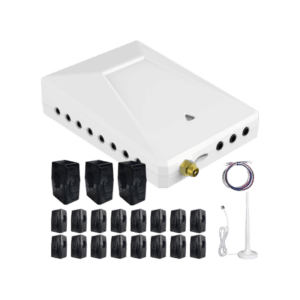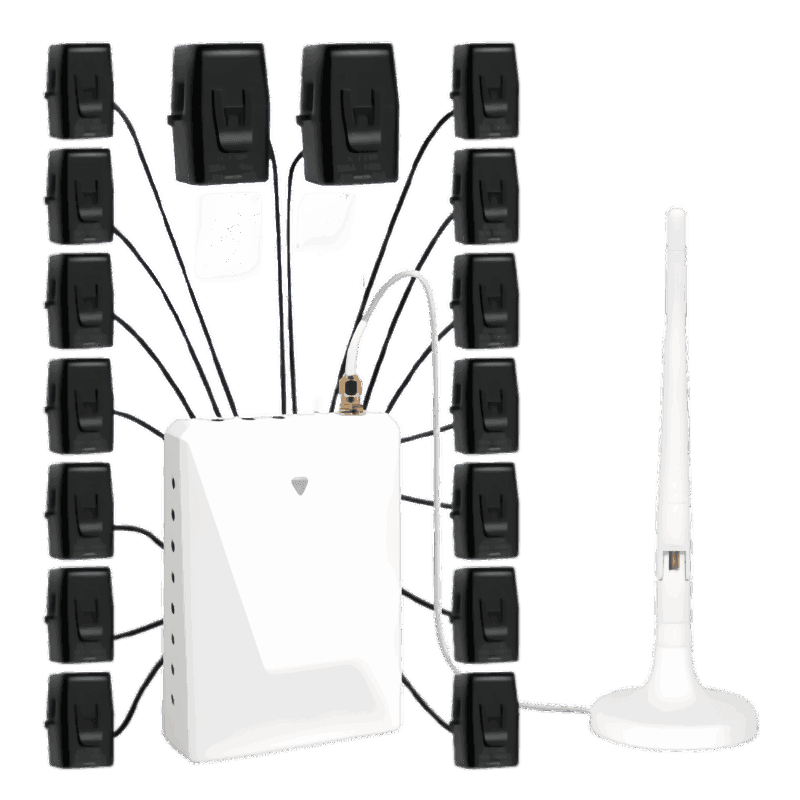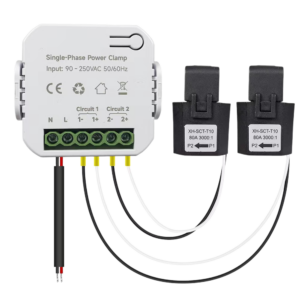Denkt u erover om een nieuw apparaat te installeren?
Misschien verhuist u naar een nieuw huis en vraagt u zich af of uw wasruimte wel het juiste stopcontact voor uw droger heeft. Of misschien heeft u net een mobiele airconditioner of zelfs een oplader voor uw elektrische auto gekocht. Een van de eerste vragen die opkomt, is simpel maar belangrijk:Hoe weet je of een stopcontact 120V of 240V is??
In Amerikaanse huizen bestaan beide soorten stopcontacten. Een standaard stopcontact in de buurt van uw lamp of tv is meestal120 voltterwijl apparaten met een hoge vraag, zoals ovens, boilers of centrale airconditioning, vaak240 voltHet is niet alleen onhandig om de verkeerde stekker in het stopcontact te steken, maar het kan er ook voor zorgen dat uw apparaat minder goed presteert, een zekering doorslaat of zelfs kapotgaat.
Het goede nieuws? Je hoeft geen elektricien te zijn om dit te ontdekken. Door de belangrijkste verschillen te leren, kun je snel en veilig de stopcontactspanning bepalen – zonder je paneel te openen of spanningvoerende draden aan te raken. Deze gids leidt je door de basisprincipes, laat je in één oogopslag zien hoe je 240V- en 120V-stopcontacten herkent en legt uit wat je moet doen als je ooit moet upgraden.
De basisprincipes begrijpen: 120V versus 240V in Amerikaanse huizen
Voordat u begint met het controleren van stekkers en labels, is het handig om te begrijpen waarom Amerikaanse huizen120V vs 240V stopcontactenIn de eerste plaats. Het Amerikaanse elektrische systeem is gebouwd op eensplit-fase 120/240V voeding, wat betekent dat uw huis feitelijk twee "onder spanning staande" draden en één nulleider van het nutsbedrijf ontvangt. Afhankelijk van hoe de circuits zijn aangesloten, kunt u 120 volt of 240 volt krijgen.
- 120V-circuits: Dit zijn de meest voorkomende. Elk circuit gebruikt één fasedraad en één nuldraad, goed voor 120 volt. Dit is de standaard voor alledaagse stopcontacten en kleine apparaten.
- 240V-circuits:Deze gebruiken beide fasedraden tegelijk, waardoor de spanning verdubbelt tot 240 volt. Omdat ze meer vermogen kunnen leveren, worden ze gebruikt voor zware apparaten.
Hier is een korte referentie:
| Spanning | Typische apparaten |
|---|---|
| 120 V | Lampen, tv's, laptops, magnetrons, koffiezetapparaten |
| 240 V | Elektrische drogers, ovens, boilers, centrale airconditioning, EV-laders |
Een veelvoorkomend punt van verwarring is het verschil tussen110V en 120V stopcontactenIn de praktijk zijn ze hetzelfde. Mensen gebruiken de termen vaak door elkaar, maar de moderne huishoudelijke bedrading in de VS is gestandaardiseerd op 120V. Als je een apparaatlabel ziet met "110V", is het simpelweg ontworpen om te werken met de huidige 120V-voeding.
Bekijk het eens op deze manier:
- 120V = dagelijks leven
- 240V = zwaar vermogen
Inzicht in deze verdeling vormt de basis voor het herkennen van de stopcontacten waarmee u in uw huis te maken hebt.
Snelle manieren om te zien of een stopcontact 120 V of 240 V is
Laten we nu overgaan tot de praktische kant:hoe ziet een 240V stopcontact eruiten hoe het verschilt van een gewone 120V. Voor deze eerste controle heb je geen speciaal gereedschap nodig; gebruik gewoon je ogen en een beetje gezond verstand.
1. Kijk naar de vorm van de uitlaat
- 120V stopcontact: De meest voorkomende stijl istwee verticale sleuven en één rond gatvoor de grond. Je ziet ze overal – slaapkamers, woonkamers, keukens – voor kleine apparaten.
- 240V stopcontact: Veel omvangrijker. Afhankelijk van het apparaat kunt uT-vormige sleuven, L-vormige patronen of drie-/vierpuntige opstellingenDeze stopcontacten zijn vaak groter en kunnen dichter bij de vloer of in bijkeukens, zoals wasruimtes, worden geïnstalleerd.
- Als u nog steeds niet zeker bent, zoek dan naar afbeeldingen van "120V vs. 240V stopcontact" om te vergelijken. Visuele weergave maakt het verschil duidelijk.
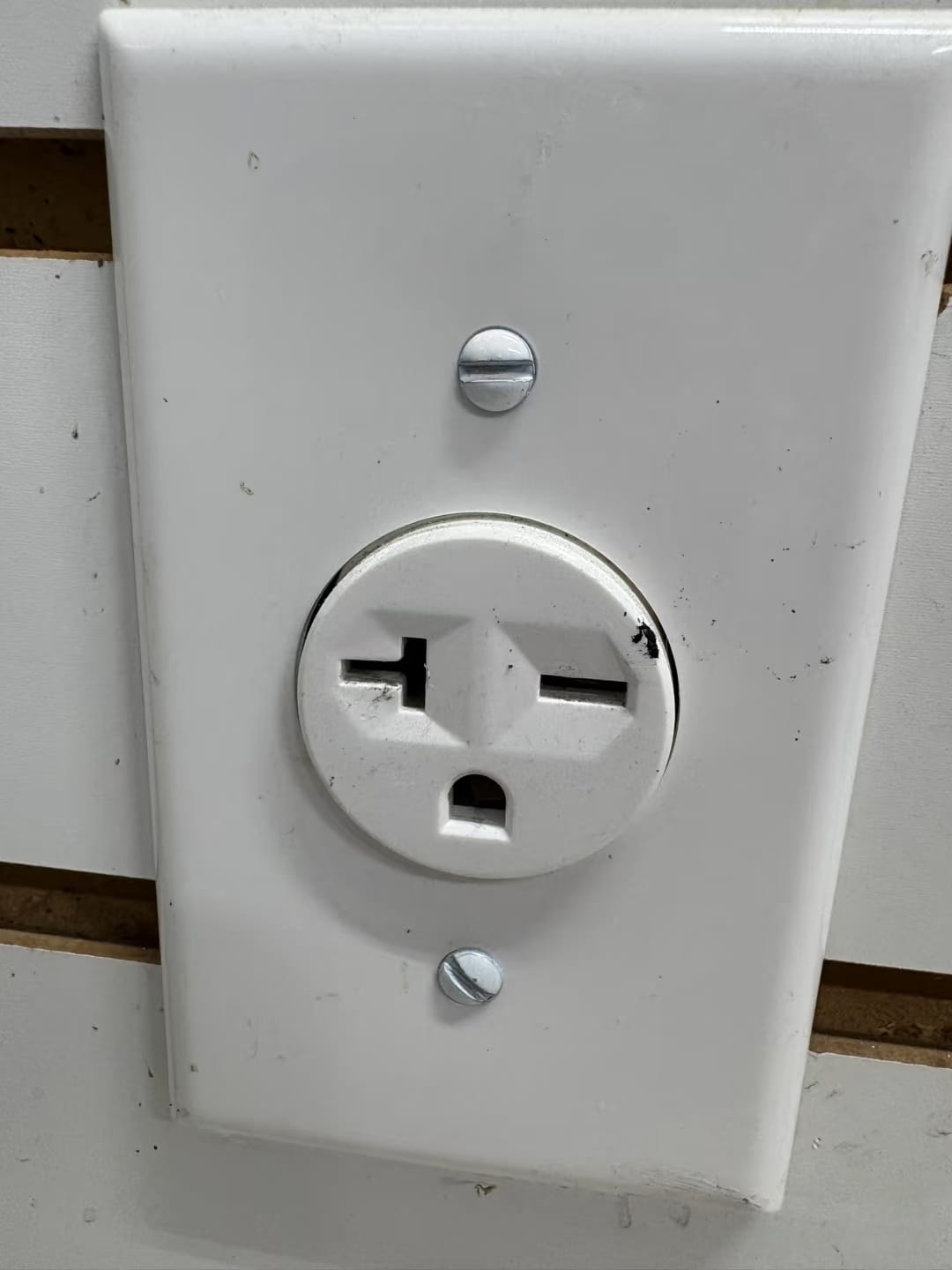
2. Controleer de stekker
Een andere manier om dit te achterhalen is door naar de stekker van het apparaat zelf te kijken:
- Alledaagse apparaten zoals lampen, broodroosters of tv's hebbenslanke stekkers met twee of drie pinnendie in 120V-stopcontacten passen.
- Zware apparaten, zoals drogers, fornuizen of opladers voor elektrische voertuigen, worden geleverd metgrotere, dikkere pluggenDeze zijn opzettelijk zo ontworpen dat zepast niet in een 120V stopcontactZo worden gevaarlijke mismatches voorkomen.
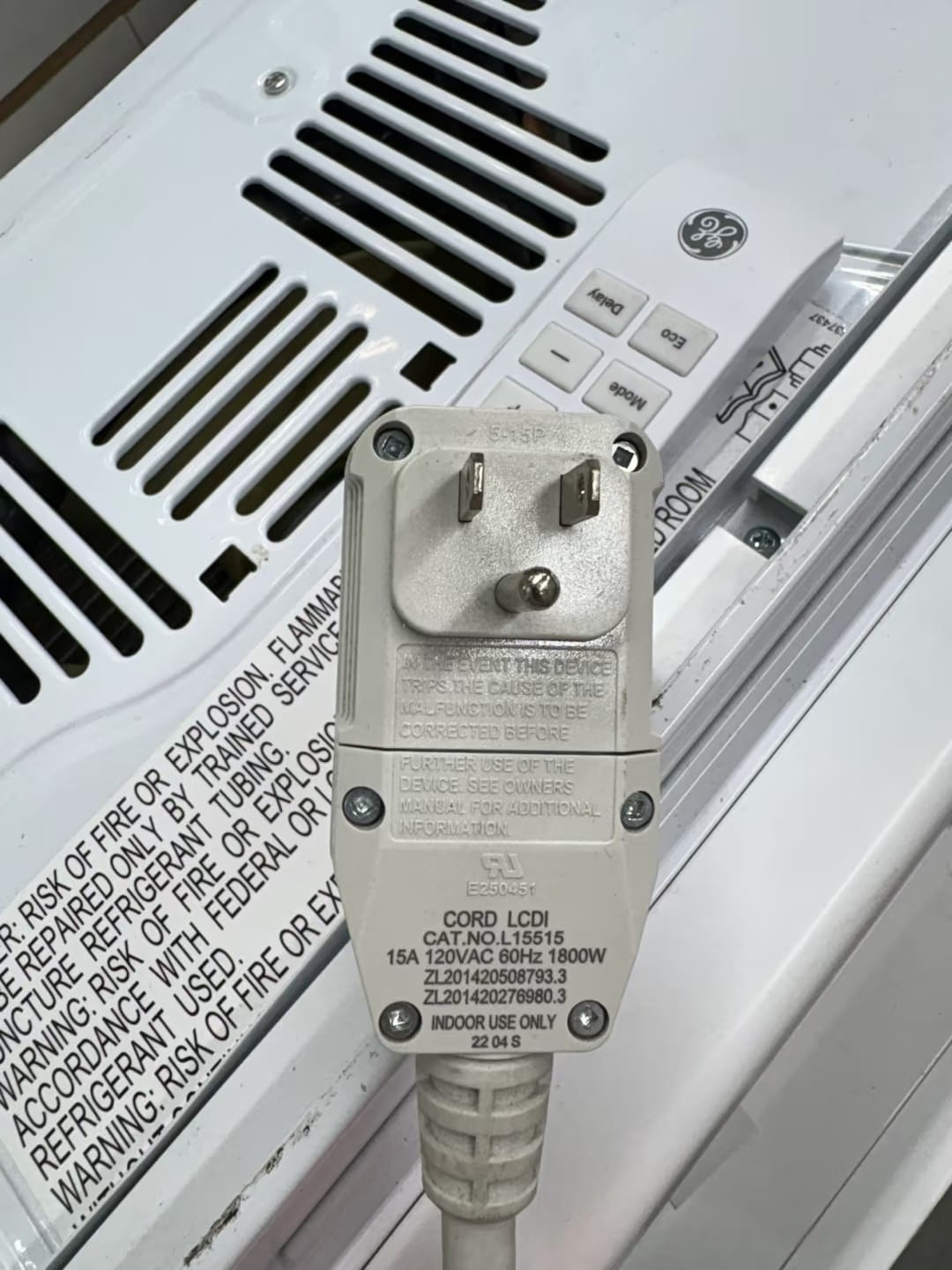
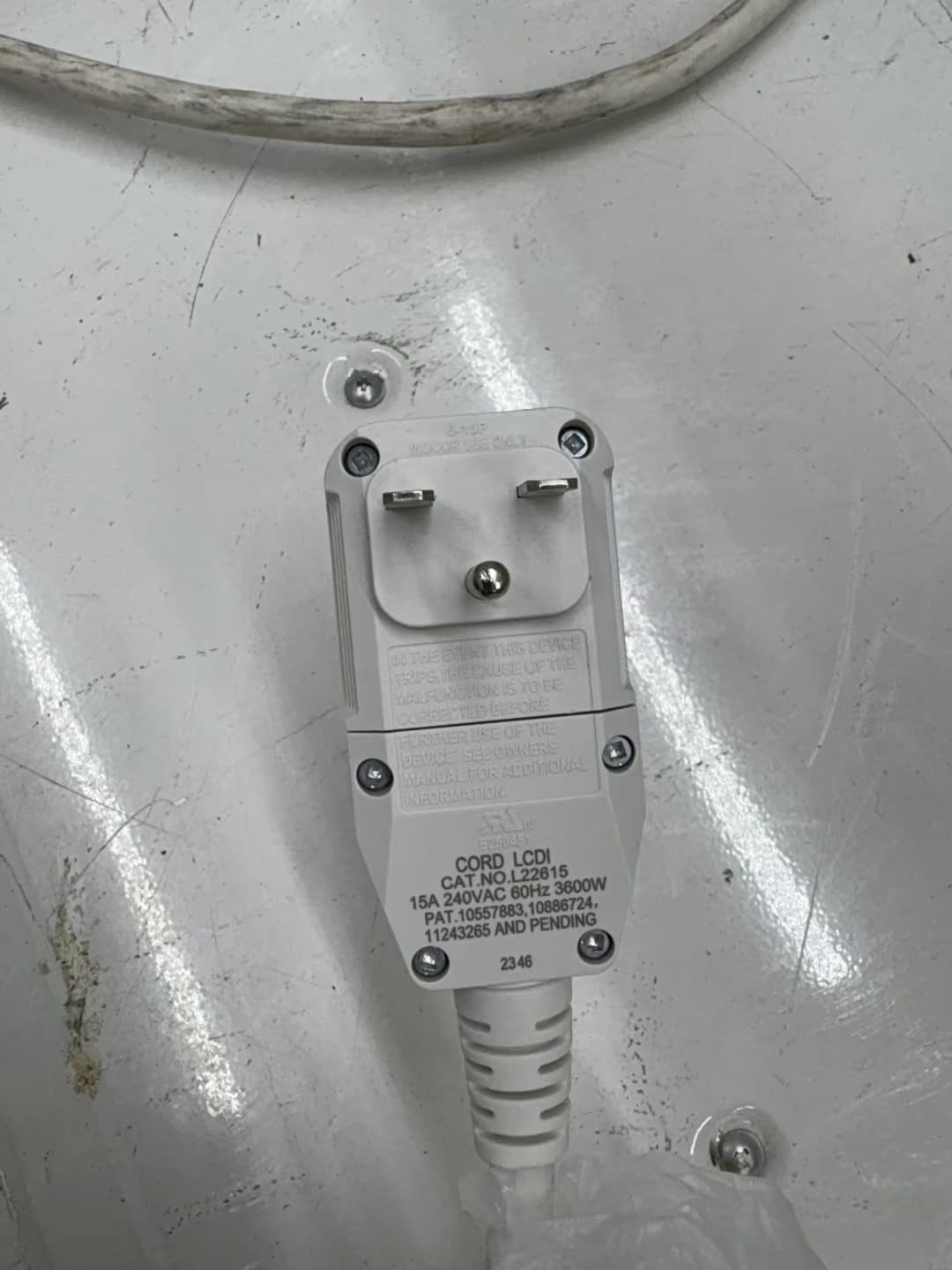
3. Lees het etiket van het apparaat
Voor elk apparaat is de ingangsspanning verplicht. Zoek naar tekst als:
- “Ingang: 120V ~ 60Hz”→ veilig voor standaard stopcontacten
- “Ingang: 240V ~ 60Hz”→ vereist een speciaal 240V-circuit
U vindt dit label meestal aan de achterkant van het apparaat, bij het netsnoer of in de gebruikershandleiding. Deze stap is vooral handig voor apparaten zoals raamairco's of geïmporteerde apparaten waarbij de stekker mogelijk niet de juiste spanning aangeeft.
Met alleen deze drie controles (vorm van het stopcontact, stekkergrootte en label) kunt u met vertrouwen de stopcontactspanning identificeren, zonder dat u het zekeringenpaneel hoeft te openen of de bedrading hoeft aan te raken.
Professionele tip:Gereedschappen zoals eensplit-fase energiemonitor, of zelfs eenmulti-circuit energiemonitor voor 240V-apparaten, kan dit proces vereenvoudigen. Voor een breder beeld vanslim energiebeheer voor thuis, probeer de GRATISHomePanel-rekenmachine.
Wanneer u doorgaans 240V-stopcontacten ziet
Als je door een typisch Amerikaans huis loopt, zie je tientallen 120V-stopcontacten, maar slechts een paar240V stopcontactenDat komt omdat ze zijn gereserveerd voor apparaten die veel meer stroom nodig hebben dan een standaardstekker kan leveren.
Dit zijn de meest voorkomende plaatsen waar je ze tegenkomt:
- Wasruimtes– Elektrische drogers hebben bijna altijd 240V nodig. Als u zich afvraagt:“Heeft mijn droger 240V nodig?”Het antwoord is waarschijnlijk ja, tenzij het een compact of op benzine werkend model is.
- Keukens– Grote ovens, kookplaten en sommige inbouwmagnetrons hebben 240V nodig om de verwarmingselementen te kunnen bedienen.
- Garages– Elektrische auto-opladers worden steeds populairder en bijna alle Level 2-opladers vereisen een 240V-circuit.
- Buitenruimtes/utiliteitsgebieden– Centrale airconditioningcompressoren, warmtepompen en bronpompen werken doorgaans op 240 V.
Pro Tip: Kijk naar het stroomonderbrekerpaneel
Als u wilt bevestigen of een circuit 120V of 240V is, controleer dan uw zekeringkast:
- Enkelpolige zekering= 120V-circuit
- Dubbelpolige zekering= 240V-circuit
Dit komt doordat een dubbelpolige zekering is aangesloten op beide "onder spanning staande" draden in het split-phase systeem en zo de volledige 240 V levert. Dubbelpolige zekeringen worden vaak aangeduid met de labels "Droger", "Fornuis", "Airco" of "Boiler".
Veiligheidswaarschuwing
Hoewel het prima is om uw paneeldeur te openen enLookVerwijder nooit afdekkingen en raak nooit bedrading aan, tenzij u gekwalificeerd bent. Als u het niet zeker weet, maak dan een foto van uw zekeringen en vraag een erkende elektricien om bevestiging.
Kun je een stopcontact van 120 V omzetten naar 240 V?
Huiseigenaren vragen zich vaak af:kun je 120V naar 240V omzettenAls je nog niet het juiste stopcontact hebt? Het korte antwoord is ja, maar het is niet zo simpel als het vervangen van het stopcontact.
Waarom het geen doe-het-zelfklus is
Voor een 240V-circuit is het volgende nodig:
- Twee hete dradenin plaats van één
- Adubbelpolige zekeringin uw paneel
- De juiste draaddikte om de verhoogde belasting aan te kunnen
Dat betekent dat het ombouwen van een stopcontact betekent dat de bedrading vanaf de zekeringkast opnieuw moet worden aangesloten en dat alles aan de voorschriften moet voldoen. Zelfstandig proberen zonder de juiste training kan leiden tot brandgevaar, overtredingen van de voorschriften of beschadigde apparaten.
Typische kosten
Thekosten voor het installeren van een 240V stopcontactDe kosten variëren afhankelijk van de afstand tussen het stopcontact en het meterkast, of er ruimte is voor een extra zekering en of er vergunningen nodig zijn. Gemiddeld besteden huiseigenaren:
- $250–$400voor een eenvoudige installatie in de buurt van het paneel
- $500–$1,000+als er nieuwe bedrading door meerdere kamers of naar een vrijstaande garage moet worden aangelegd
Als u van plan bent om in de toekomst een EV-lader, warmtepomp of grote apparaatupgrade uit te voeren, is het verstandig om zo snel mogelijk een 240V-stopcontact te installeren.
Beste praktijk
Huur altijd eenerkende elektricienNiet alleen zal het werk veiliger zijn, maar het zorgt er ook voor dat uw installatie de inspectie doorstaat en voldoet aan deNationale Elektrische Code (NEC).
Conclusie: korte samenvatting
U zou nu vertrouwen moeten hebben inHoe weet je of een stopcontact 120V of 240V is?in uw huis. De belangrijkste punten om te onthouden:
✅120V stopcontactenalledaagse apparaten zoals televisies, lampen en koffiezetapparaten van stroom voorzien.
✅240V stopcontactenzware apparaten zoals drogers, ovens, boilers en opladers voor elektrische voertuigen hanteren.
👀 Je kunt ze herkennen aan:de vorm van het stopcontact, de stekkermaat of het etiket van het apparaat.
🛡️ Als u het ooit niet zeker weet, gebruik dan een spanningsmeter of, nog beter, schakel een erkende elektricien in.
En als je nog een stap verder wilt gaan, eenslimme energiemonitorkan u een duidelijk beeld geven van hoe uw huis 120V en 240V verbruikt. Die kennis helpt u niet alleen fouten te voorkomen, maar bespaart u ook geld op uw energierekening.
FAQ
Kan een standaard stopcontact zowel 120V als 240V zijn?
Nee. Ze zijn anders bedraad en ontworpen met verschillende stopcontactvormen om ongelukken te voorkomen. Een stopcontact is altijd het een of het ander.
Is het veilig om met een multimeter te testen?
Ja, maar alleen als je ervaring hebt. Een non-contactspanningstester voor stopcontacten thuisis veiliger voor beginners. Laat het bij twijfel over aan een elektricien.
Kunnen slimme stekkers aangeven hoeveel spanning er is?
De meeste slimme stekkers meten de spanning niet rechtstreeks. Ze kunnen het energieverbruik van 120V-apparaten weergeven, maar voor volledige circuitbewaking, inclusief240V-apparaten—dan heb je een slimme energiemonitor nodig.
Wat gebeurt er als je 120V op 240V aansluit?
Het kan het apparaat direct vernietigen. DaaromVeiligheidsstopcontact 120V 240Vis van groot belang: stopcontacten en stekkers van apparaten zijn expres zo ontworpen dat ze niet op elkaar passen.
Heeft mijn droger 240V nodig?
De meeste grote elektrische drogers in de VS hebben 240 V nodig. Compacte drogers en gasdrogers gebruiken mogelijk slechts 120 V, dus controleer altijd het label voordat u een droger koopt of installeert.
